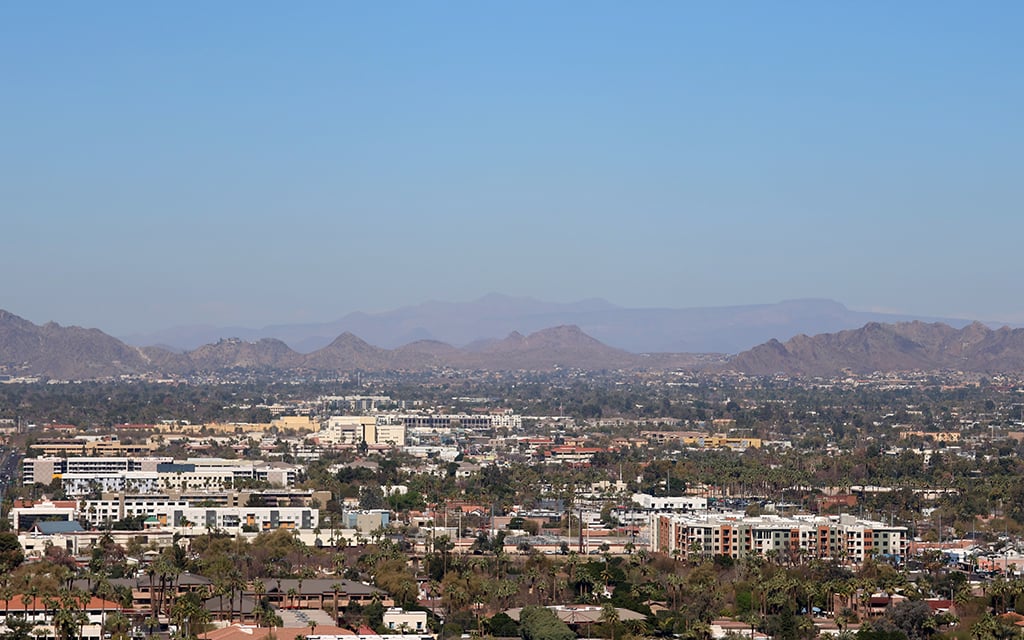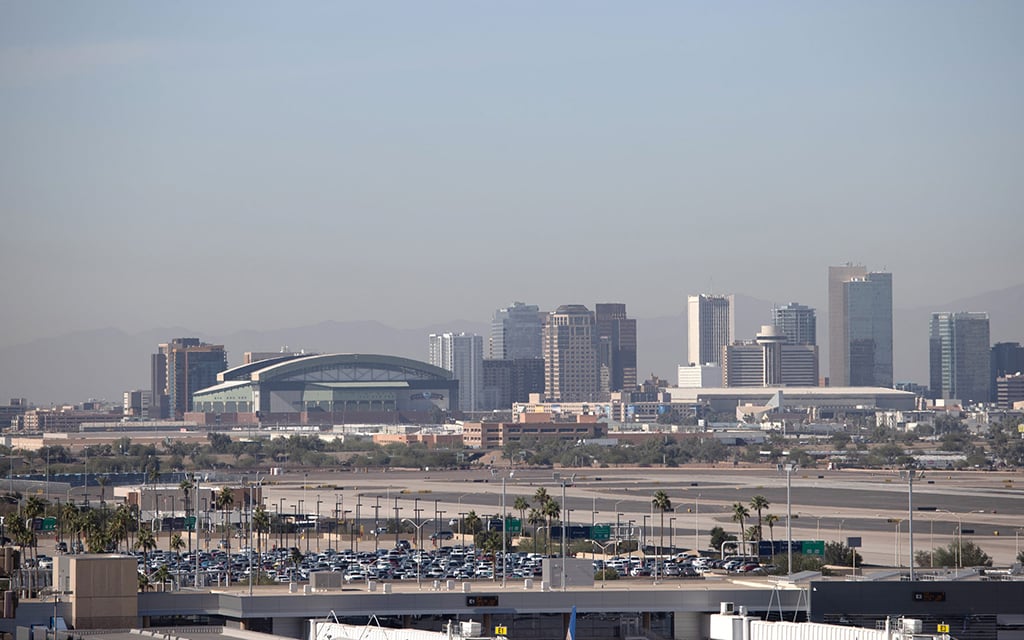WASHINGTON – The EPA says Phoenix-area air quality has worsened to “serious” levels, a designation that would trigger growth restrictions, a shift to cleaner energy sources and lower-emission vehicles and other steps.
The Maricopa Association of Governments – the region’s lead air quality planning agency – agrees that ground-level ozone levels are unhealthy.
But an estimated 80% of Arizona smog stems from pollution that drifts in from Mexico and California, plus some naturally occurring ozone from sources like wildfires and lightning strikes. According to MAG, that making the problem “uncontrollable” at the local level.
In a Feb. 12 letter, the six Arizona Republicans in the U.S. House urged President Donald Trump to block EPA from downgrading the region’s designation.
Even if emissions were fully eliminated from local industrial sources and vehicles, they argue, air quality still wouldn’t improve enough to avoid the “serious” ranking.
“These additional controls … will not improve air quality. They will only serve to halt economic and industrial development in and around one of the fastest growing and important economies in the United States,” wrote Rep. Andy Biggs, R-Gilbert, and colleagues.
Environmentalists and public health advocates say ignoring the problem won’t help, no matter where the pollution comes from.
“Pointing fingers elsewhere is not going to clean up our air or make people healthier,” said Sandy Bahr, director of the Arizona chapter of the Sierra Club.
In 2024, the American Lung Association ranked Phoenix as the fifth worst U.S. city for ozone, with 47 days of unhealthy levels.
“Arizona has some of the worst air quality in the country,” said Melissa Ramos, senior manager of clean air, advocacy and policy for the American Lung Association in Arizona and Nevada.
At high altitudes, ozone – a colorless and odorless gas made from three oxygen atoms – protects against ultraviolet radiation. At the surface, it’s the main ingredient in smog. In high enough concentrations, it’s hazardous and causes asthma and other ailments.
Ground-level ozone forms as a chemical reaction involving pollution from cars, power plants, industrial boilers, refineries and chemical plants, according to the EPA.
It’s “most likely to reach unhealthy levels on hot sunny days in urban environments” but the problem doesn’t only afflict cities, the EPA says: “Ozone can also be transported long distances by wind, so even rural areas can experience high ozone levels.”
Sen. Mark Kelly, a Democrat, said he is concerned about both the region’s air quality and its manufacturing jobs and is working with the newly confirmed EPA administrator, Lee Zeldin, to strike a good balance.
“We’ve got issues in Arizona because of our ozone,” the senator said Thursday in an interview. But he added, “I’m concerned that what Rep. Biggs is suggesting will bring dirtier air to Arizona.”
President Richard Nixon, a Republican, created the Environmental Protection Agency in 1970, the same year he signed the Clean Air Act, which lists ozone as one of six common air pollutants. The agency sets air quality standards for ozone and particulate matter.
Ozone levels in the Phoenix-Mesa area, which for EPA’s purposes includes Maricopa, Gila and Pinal counties, have exceeded national standards since 2012. The “marginal” nonattainment designation was bumped to “moderate” in 2023.
According to the Congressional Research Service, moderate nonattainment triggers a deadline for a region to take steps to reduce ozone levels. That includes taking inventory of emissions, requiring emissions offsets and adopting a vehicle inspection and maintenance program.
Last August, the EPA approved a plan that let Arizona fleet operators generate emissions credits when they retrofit or replace vehicles, then sell those credits to companies that want to expand but wouldn’t otherwise be allowed to because of regional emissions caps.
Arizona requires annual emissions tests for vehicles, though Republican state lawmakers have tried to end that requirement. The state also offers tax incentives for owners of zero emissions vehicles.
A “serious” designation would mean additional requirements, such as mandatory shifts to alternative fuel for vehicle fleets.
MAG encourages carpooling, waiting until it’s cool to fill a gas tank, shifting to water-based paint and electric lawn mowers, conserving electricity and other measures that individuals can do to help.
Phoenix adopted a climate action plan in 2021. The following year, the city’s Public Transit Department announced it would start shifting to lower-emission buses.
But ozone levels have continued to rise.
A 2023 presentation from MAG shows that no more than 20% of regional ozone is produced in Arizona. As much as 9% comes in from California and other neighboring states. According to multiple government and academic analyses, most of the smog-creating pollution that comes into Arizona from outside the country comes from Mexico. Wildfires have also caused spikes.
There’s no dispute that air pollution crosses borders.
In 2023, the EPA proposed a “Good Neighbor Plan” that requires 23 states to take steps to improve conditions downwind. According to the EPA, ozone pollution from Arizona affects Nevada, Colorado, New Mexico and Texas, though not as much as pollution from California affects Arizona.
California has its own Good Neighbor State Initiative that acknowledges it’s partly responsible for nonattainment in Arizona, Colorado, Nevada and Utah.
It’s not just Biggs and other Republicans concerned about compliance costs.
“The Valley is based on a growth model, and if you don’t have growth, people suffer,” said Brian Petersen, associate professor of geology and planning at Northern Arizona University.
At Moms Clean Air Force, which has over 26,000 members in its Arizona chapter, state field coordinator Hazel Chandler takes the problem personally. She has advanced breast cancer that has reached her lungs and other vital organs. Poor air quality has worsened her suffering, she said.
“It’s going to require some difficult decisions, but we (have) just got to make them. People’s lives are too important,” she said.




